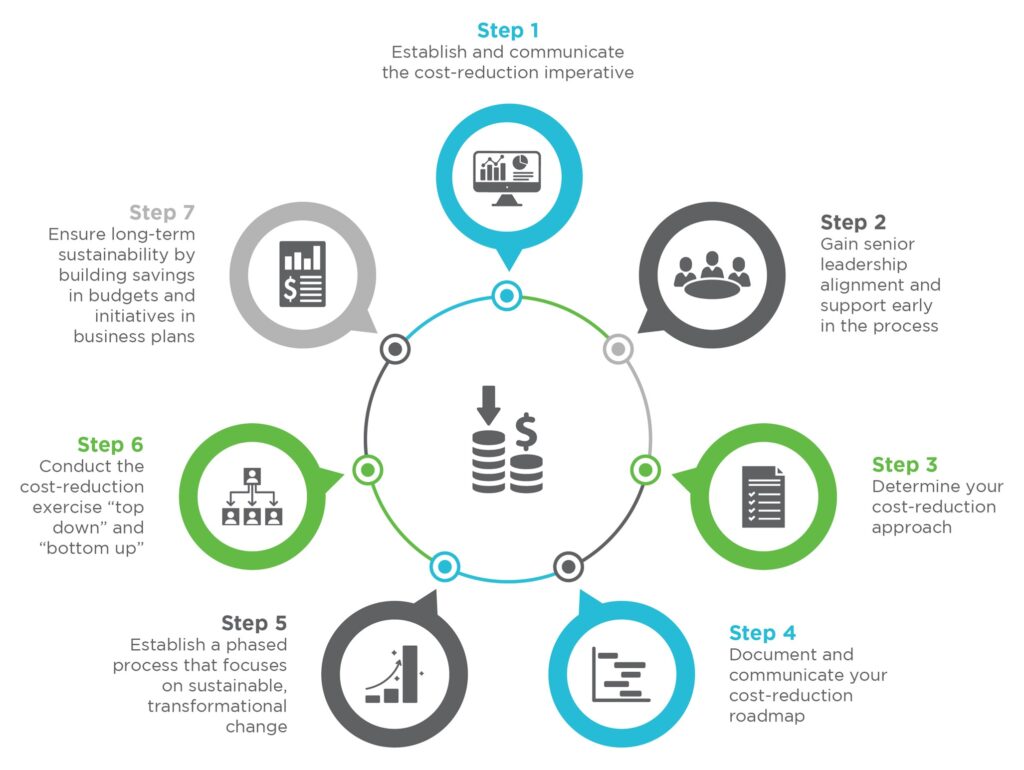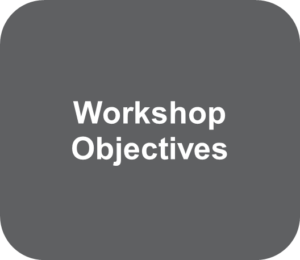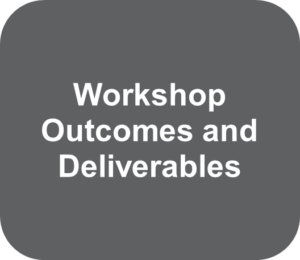Slower economic growth coupled with inflation and rising interest rates has resulted in cost pressures across multiple industries. Many companies have witnessed their costs increase in the face of revenue challenges, creating an unsustainable environment. In response, companies are looking to reduce costs to retain customers, manage finances, and meet shareholder expectations. Corporate Services leaders may be charged with savings in their specific functional domain or may be required to lead organization-wide savings initiatives under financial or restructuring objectives. Each mandate, regardless of scope, requires a methodical approach. Our proven, seven-step approach described below showcases the importance of the right steps in the right order to make the biggest impact.

Corporate Services transformations achieve 15%-25% labor cost savings
Step 1: Establish and Communicate the Cost-Reduction Imperative
Establishing and communicating an easily understood imperative will help to ensure buy-in at all levels. Healthcare has an imperative related to reduced revenues as the population ages and moves to Medicare, reducing the average payment for services. Another such imperative is using shareholder expectations to help communicate the need for cutting costs (e.g., comparing management aspirations for earnings per share (EPS) to industry and/or analyst expectations (see example chart below).

Step 2: Gain Senior Leadership Alignment and Support Early in the Process
Conducting a cost-reduction planning workshop with senior leadership will ensure alignment and support for the cost-reduction process. Consider the objectives as well as the outcomes and deliverables you want to achieve. Examples are shown below.
 |
|
 |
|
Step 3: Determine Your Cost-Reduction Approach
Four cost-reduction approaches are predominant. Each approach varies according to its ideal application and time to implement.
Process Driven Work elimination and streamlining through process redesign result in reductions.
Target-Driven Top-down reduction targets are assigned to functions; functions individually determine how targets will be achieved.
| Benchmark Driven | Reductions are set using functional or process benchmarks. |
| Organization Driven | New, leaner organizations are designed; headcount is selected for all or new positions. |
| Process Driven | Work elimination and streamlining through process redesign result in reductions. |
Often, the best cost-reduction approach for an organization can be crafted using elements of each of the methods. Regardless of the cost-reduction method, an ideal approach should:
- Fit the organization’s culture
- Achieve reductions with minimal impact on employee morale
- Retain high-potential and high-performing employees
- Reduce work where necessary to ensure savings are sustainable
Step 4: Document and Communicate Your Cost-Reduction Roadmap
To achieve buy-in to the changes, it is important to document and communicate the reasons, plans, and timing of the initiative. Consider these elements in your communications:
- Imperative and Objectives
- Describes the need for cost reduction and the desired outcome
- Provides a clear understanding of cost-reduction needs and objectives to employees, customers, and other stakeholders
- Identifies organizational priorities
- Decisions Already Made
- Communicates key organization, operations, and infrastructure decisions that have already been made
- Provides clarity for participants during detailed design and implementation plan development
- Critical Success Factors and Principles
- Defines success and what principles are to be followed during the cost-reduction process
- Communicates an understanding of organizational values, beliefs, and philosophies
- Approach, Process, and Timeline
- Defines the approach and process by which cost-reduction initiatives will be identified
- Identifies and brings together key corporate planning and cost-reduction milestones
- Sets the pace and cadence for the cost-reduction process
- Implementation Priorities and Critical Milestones
- Describes leadership’s expectations for implementation priorities
- Identifies critical implementation milestones to achieve cost reductions
- Management Structure and Roles
- Clearly defines roles and responsibilities for all participants
- Establishes decision rights and the decision-making structure
- Defines the interfaces of various resources and efforts within the cost-reduction process
Step 5: Establish a Phased Process that Focuses on Sustainable, Transformation Change
| Phase I: Establish the Cost-Reduction Imperative | Phase II: Develop the Blueprint | Phase III: Perform Detailed Design | Phase IV: Implement Designs |
|
|
|
|
| Key Questions to Address | |||
|
|
|
|
|---|---|---|---|
Step 6: Conduct the Cost-Reduction Exercise “Top Down” and Bottom Up”
Using both a top-down and bottom-up approach allows you to create the most successful and sustainable plans by providing guidance and expectations while depending on your people to deliver on the details.
Senior leadership should set the top-down expectations by first selecting the expected approach to complete the exercise. Next, they should define the timelines required for the process and set targets/parameters on cost savings and organizational changes.
Functional teams should build the plans bottom-up by using top performers from multiple levels of the organization. The teams should identify the future managers of a function and involve them in the process, as possible. It is important to provide the resources and latitude the teams need to be successful and encourage new approaches and ways of thinking.
Final plans should be challenged by the leadership team prior to approval. Leaders from each functional area should present their approach and encourage peers from other functions to question and challenge everything, including plans, assumptions, targets, etc. During this challenge period, ensure everyone is maintaining an open mind, and adjust plans as needed.
Step 7: Ensure Long-Term Sustainability by Building Savings in Budgets and Initiatives in Business Plans
- Build all initiatives into multi-year business plans
- Align strategic goals and cost-savings goals to avoid conflict and support success
- Create the right metrics to track initiative progress and report regularly
- Provide progress updates on actions taken on a consistent basis
- Re-evaluate initiatives annually to make sure desired results are still on track
Do not lose the cost benefits of your team’s plans by not maintaining momentum and discipline long term
KEY SUCCESS FACTORS
- Obtain CEO support (a platitude, but essential), then gain the support of his/her directs.
- Establish a project structure with employee teams, one that is internally led. Consider the role of outside help—the project cannot be centered around consultants “chopping” costs, but consultants can help guide the process and help the teams achieve success.
- Establish a great core project team with recognized internal stakeholders to drive the process.
- Set reasonable targets informed by a clear rationale.
- Focus on sustainability in cost reductions.
- Ensure the appropriate process work, organization rewiring, and change management occur.
- Make sure cost-reduction initiatives are “actionable” and connect the path from current to future budgets.
- Track and monitor cost-reduction initiatives as they are being implemented to ensure they achieve cost savings.
This approach helped one client save more than $500 million in annual costs

